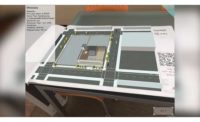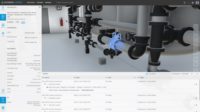Construction software vendor Autodesk disclosed April 1 that it is conducting an internal investigation into its own accounting practices and is putting off the release of its annual financial report. The technology company also released new embodied carbon calculation and AI-assisted design tools recently.
In a U.S. Securities and Exchange Commission filing, Autodesk, Inc., said it was unable to file its annual report for the year ended January 31, 2024 (Form 10-K) and after its earnings release on February 29 information was brought to the attention of management, which informed its audit committee and the board of directors, which caused the audit committee to begin an internal investigation with the assistance of outside counsel and advisors, regarding Autodesk's free cash flow and non-GAAP operating margin practices.
Autodesk said it would not comment on the investigation outside of the information in its filing and said in the filing that it believes none of the matters under investigation affect any previously issued financial statements or the information in the company’s earnings release on February 29 and that it expects to file the Form 10-K within a 15-day extension period.
Autodesk has been in the process of transitioning its business model from selling software license seats to customers toward a model based on ongoing subscriptions to cloud services hosting its design and construction products. The company is also shifting to setting prices directly for customers instead of using authorized third-party resellers. It is unknown at this time if Autodesk's major shifts in its pricing structure are related to the internal investigation of its accounting practices.
Autodesk voluntarily contacted the SEC about the investigation and said it plans to update the agency on any findings.
Autodesk Rolls Out Tools for Carbon Calculation, AI-Assisted Design
On April 2, Autodesk also announced several new features and capabilities for its architecture, engineering, construction and operations cloud services portfolio, including a carbon analysis tool, a search and convert option to organize geometry into blocks in AutoCAD, and more artificial intelligence capabilities.
Embodied Carbon Analysis in Autodesk Forma in tech preview form. Forma Embodied Carbon Analysis is powered by a data model developed by EHDD, an architecture firm that worked on early versions of net-zero-energy building concepts.
"The Embodied Carbon Analysis in Forma enables designers to better understand the carbon impacts from primary material choices and building form during site feasibility and massing studies at the beginning of a project planning process," Autodesk Vice President of Product Development for Building and Infrastructure Design Dan Lohmeyer wrote in a blog announcement.
A new artificial intelligence tool, Total Carbon Analysis, offers architects access to carbon impacts through dashboards gleaned from similar projects to evaluate the tradeoffs between embodied and operational carbon. The AI-powered analysis tool in Total Carbon Analysis is based on EHDD's C.Scale application program interface.
"The biggest opportunity for technology to manage our carbon footprint is by having tools like Forma, that will allow us to analyze our designs, in real time, as we're designing them. Being able to have that information, that feedback, as we're doing the design work is really what's going to enable us to achieve the goals that we need to reduce the carbon impact of the built environment," said Mike DeOrsey, principal and digital practice manager at Stantec, an early user of Forma, in a statement.
Autodesk is also expanding its alliance with Esri with new integrations of ArcGIS Basemaps with Civil 3D and AutoCAD to provide civil engineers with geospatial data and mapping capabilities.
Lohmeyer's blog said the goal of these integrations is to enhance visibility of existing conditions so that civil engineers can minimize environmental impacts and ecological disruption. In addition to design workflows, a new update to the integration with Esri’s ArcGIS Online and Info360 Asset was released to allow water and wastewater network operations and maintenance teams access to asset condition data, risk analysis, and rehabilitation plans.
In AutoCAD 2025, Autodesk is using an AI to help designers reuse content and standardize drawings with the new Smart Blocks tools. New features include Search and Convert, which enable users to search drawings for objects and convert them into new, existing, or suggested blocks and a Object Detection tool, that automates cleaning up drawings by recognizing objects and converting them into blocks. Object Detection is available as a tech preview and is expected to change with user feedback.






Post a comment to this article
Report Abusive Comment